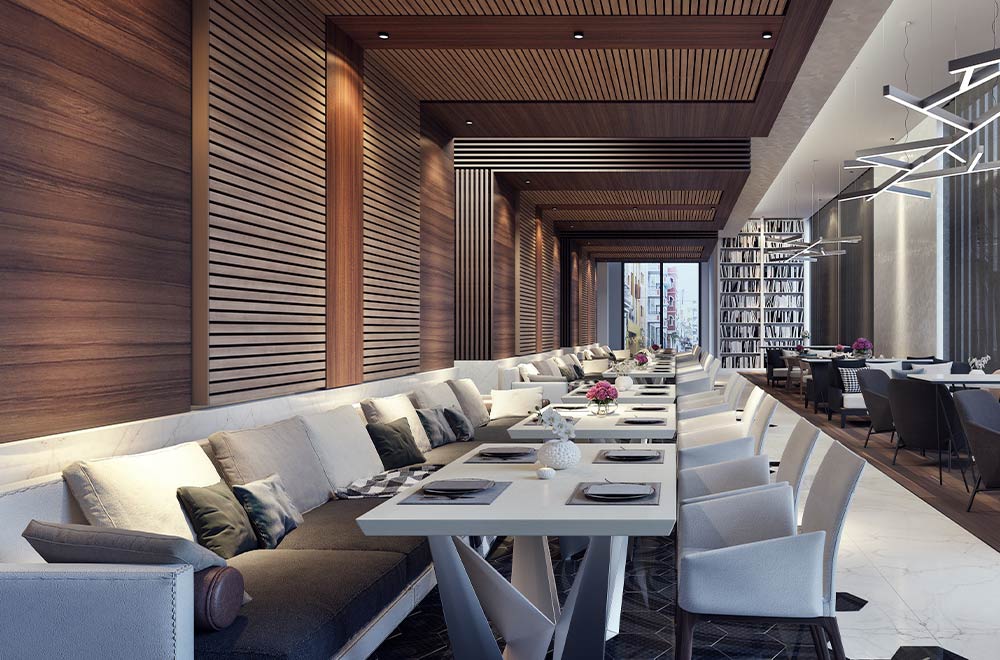Instagrammable Restaurants Islamabad: Picture-Perfect Dining Knowledge
Savor Authentic Oriental Food With a Pan-Asian Twist for a Culinary Experience
Embarking on a culinary trip via genuine Oriental food, improved with a Pan-Asian twist, offers an one-of-a-kind opportunity to explore the abundant tapestry of tastes that specify the area's varied cooking customs. As you ponder these tempting recipes, think about the cultural stories and historic influences that shape them, each bite supplying a story waiting to be discovered. pan asian dining Islamabad.

Checking Out Pan-Asian Tastes
In the realm of worldwide gastronomy, Pan-Asian cuisine sticks out for its amazing diversity and the unified interaction of flavors from various Asian cultures. This culinary technique celebrates the unique ingredients and abundant practices discovered across the continent, creating a tapestry of preferences that is both interesting and rewarding. Trick to Pan-Asian cuisine is its capability to stabilize different tastes-- wonderful, salty, spicy, and sour-- while highlighting the freshness and quality of each ingredient.
From the umami-rich soy sauce of Japan to the fiery chili peppers of Thailand, Pan-Asian food offers a substantial scheme of tastes. These components are commonly integrated in inventive means, enhancing meals with layers of complexity. For circumstances, using fragrant natural herbs such as lemongrass and cilantro, usual in Vietnamese and Thai food, adds a refreshing illumination to recipes, while the incorporation of coconut milk provides a luscious, abundant structure.
The focus on fresh fruit and vegetables and fragrant spices guarantees that each meal is not only a feast for the preference buds but likewise for the senses. Pan-Asian cuisine invites diners to start a cooking trip, discovering the vast and varied landscapes of Asian gastronomy with every bite.
Fusion Recipes to Try
While Pan-Asian cuisine is commemorated for its typical tastes, the contemporary culinary landscape is significantly accepting combination dishes that blend these traditional components with influences from other areas. This innovative approach not only honors the rich heritage of Asian cooking arts however likewise presents unique preference experiences that attract contemporary tastes buds.
A prime example of such a fusion meal is the Korean-Mexican taco, where marinaded bulgogi beef is covered in a warm tortilla, covered with kimchi and a hot gochujang-infused salsa. This combination weds the vibrant, mouthwatering flavors of Korea with the lively, fresh components of Mexican cuisine. Likewise, sushi burritos have actually gotten appeal, integrating the fragile virtuosity of Japanese sushi with the hearty, hand-held benefit of a burrito, frequently featuring blend active ingredients like tempura shrimp and avocado with a drizzle of wasabi mayo.
Another notable recipe is Thai curry ramen, which infuses the velvety, fragrant spices of Thai curry into the reassuring broth of conventional Japanese ramen, producing an unified blend that entices the senses. These combination dishes expand past mere novelty; they stand for a cooking discussion between cultures, motivating exploration and technology in the world of Pan-Asian cuisine.
Vital Components and Seasonings
To absolutely value Pan-Asian cuisine, one need to comprehend the necessary active ingredients and flavors that create its foundation. This diverse cooking design draws from a rich tapestry of Asian practices, utilizing a harmonious blend of tastes and structures.
Aromatic components are essential, with ginger, garlic, and lemongrass being ubiquitous throughout various Pan-Asian dishes. These components offer a great smelling base that boosts the complexity of flavors. Seasonings such as celebrity anise, cardamom, and cinnamon introduce warmth and character, echoing influences from regions like China and India.

Cooking Strategies and Tips
Mastering the art of Pan-Asian cuisine needs knowledge with its distinct cooking strategies, each adding to the vivid tapestry of tastes this culinary tradition is commemorated for. Central to these techniques is the stir-fry, a fast food preparation strategy that maintains the nutritional honesty and brilliant shades of active ingredients. Making use of a wok, the stir-fry method permits even warmth circulation, vital for achieving the particular structure and taste balance of Pan-Asian dishes.
Another essential technique is steaming, especially prevalent in Chinese food. This gentle fish grill technique maintains the all-natural tastes and nutrients of components, making it excellent for fish and shellfish and vegetables. Dumplings, a cherished staple, commonly benefit from steaming, leading to soft, succulent textures.
Cooking, additionally important, presents smoky depths to meals such as Oriental bulgogi or Japanese yakitori (pan asian dining spice house Islamabad). This technique commonly entails seasoning active ingredients, allowing tastes to pass through deeply prior to food preparation over an open flame or hot plate
Last but not least, grasping the art of stabilizing flavors-- pleasant, sour, salty, bitter, and umami-- is important. Appropriately layering these aspects can boost a meal from common to phenomenal, using a complicated and satisfying culinary experience that symbolizes the essence of Pan-Asian food.
Dining Experiences Worldwide
Across the globe, Pan-Asian food offers an exceptional eating experience, celebrated for its abundant tapestry of flavors and lively presentations. This cooking phenomenon has gone beyond social borders, catching the hearts and palates of food lovers worldwide. In cosmopolitan cities like New York, London, and Sydney, Pan-Asian dining establishments function as melting pots where culinary practices from Thailand, Japan, China, and past converge, supplying diners with a diverse mix of recipes that highlight the region's variety.
The international charm of Pan-Asian cuisine depends on its capability to offer both credibility and innovation. Chefs masterfully marry standard ingredients such as lemongrass, soy sauce, and miso with contemporary methods, causing dishes that are both refreshingly new and familiar. This fusion allows diners to begin on a culinary journey that respects heritage while embracing modernity.
Additionally, eating experiences are raised with bar and grill near me attentively created settings that reflect the principles of Pan-Asian visual appeals. From minimalist Japanese-inspired insides to vivid Thai-themed rooms, each dining establishment uses a distinct setting that complements the culinary offerings. Because of this, clients are not simply eating a meal yet partaking in a social experience, making Pan-Asian eating a genuinely international phenomenon.
Conclusion
The expedition of Pan-Asian food offers an extensive understanding of the intricate interplay of tastes and cooking customs throughout Asia. By accepting blend meals such as Thai curry ramen and sushi burritos, the cooking trip not only highlights the flexibility of typical active ingredients however also showcases ingenious modern strategies. This gastronomic journey, improved by cooking techniques and necessary spices, provides an unique opportunity to value the multiculturalism and culinary virtuosity that define Pan-Asian food on a worldwide scale.
Embarking on a cooking trip with genuine Oriental food, improved with a Pan-Asian spin, uses a distinct possibility to explore the abundant tapestry of tastes that define the area's diverse cooking traditions.In the realm of global gastronomy, Pan-Asian food stands out for its remarkable diversity and the unified interaction of flavors from numerous Asian cultures. Trick to Pan-Asian food is its capability to stabilize contrasting flavors-- pleasant, salted, spicy, and sour-- while highlighting the freshness and top quality of each ingredient.
